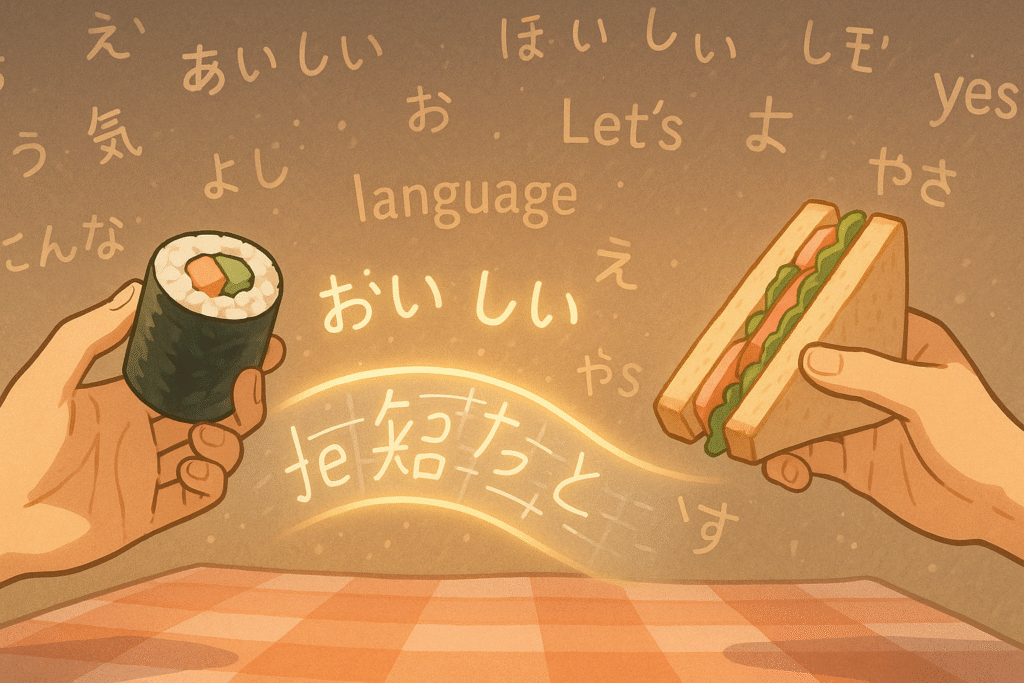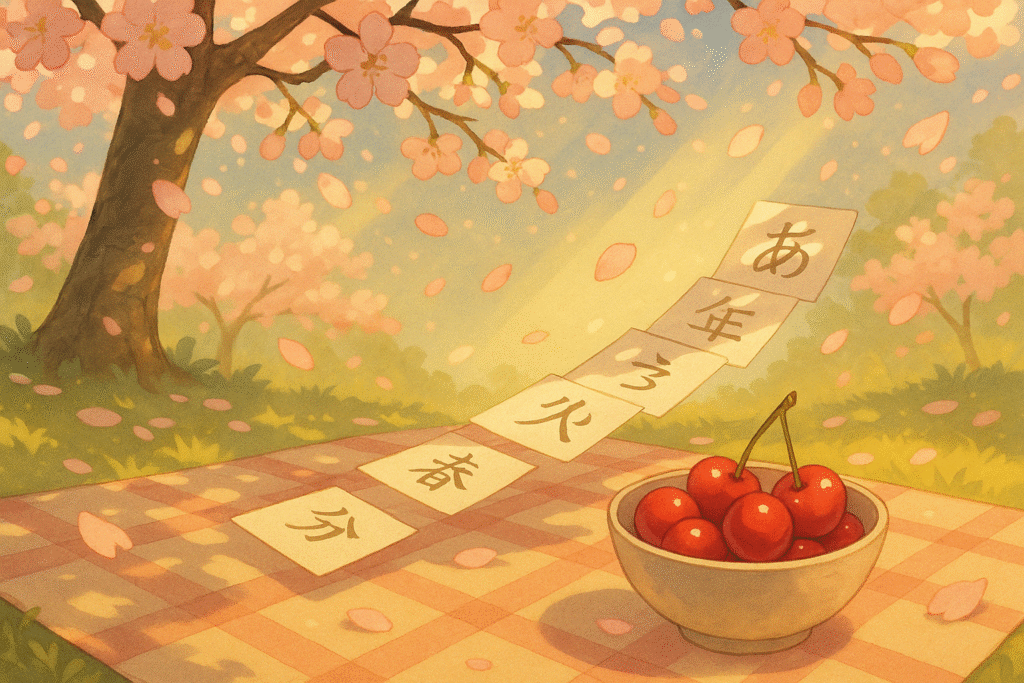Have you ever watched anime or spoken with a Japanese friend and heard them end sentences with “dayo”? This small but mighty expression is one of the most frequently used conversational elements in everyday Japanese—yet many textbooks barely scratch its surface. Understanding the true dayo meaning can transform your Japanese from textbook-rigid to naturally flowing.
What Does Dayo Mean in Japanese?
At its core, dayo (だよ) is a sentence-ending particle combination that adds emphasis and assertion to statements. The dayo meaning is essentially “it is” or “that’s how it is” with a casual, conversational tone.
Breaking it down:
- Da (だ) – This is the casual form of “desu (です)” meaning “is/am/are”
- Yo (よ) – A particle that adds emphasis or conveys that you’re sharing new information
When combined, dayo creates a casual yet confident assertion that’s fundamental to sounding natural in everyday Japanese conversation.
The Difference Between Dayo and Desu
While textbooks often focus heavily on “desu” as the polite copula, your Japanese will sound more authentic when you understand when to use dayo instead:
| Desu (です) | Dayo (だよ) |
|---|---|
| Formal/polite | Casual/friendly |
| Used in business, with strangers | Used with friends, family |
| Sounds stiff in casual settings | Sounds natural in daily conversation |
| “Kore wa hon desu” (This is a book) | “Kore wa hon dayo” (This is a book!) |
As noted by native speakers, using “desu” too much in casual settings can make you sound like a “dorky gaijin” (foreigner), as one Japanese teacher explains. Your conversational Japanese will instantly improve when you appropriately incorporate dayo.
Common Usage Patterns for Dayo
The dayo meaning changes slightly depending on context. Here are the primary ways it’s used:
1. Making Assertions or Declarations
When you want to state something with certainty:
Example:
- Japanese: 明日は雨だよ。
- Romaji: Ashita wa ame dayo.
- English: “It’s going to rain tomorrow (I’m telling you).”
2. Providing New Information
When sharing something the listener doesn’t know:
Example:
- Japanese: この店のラーメンはおいしいだよ。
- Romaji: Kono mise no rāmen wa oishii dayo.
- English: “The ramen at this shop is delicious (just so you know).”
3. Gentle Correction or Reminder
When correcting someone’s misconception:
Example:
- Japanese: 違うよ、映画は7時からだよ。
- Romaji: Chigau yo, eiga wa shichi-ji kara dayo.
- English: “No, the movie starts at 7 (I’m correcting you).”
Want to explore Japan’s culture?
Discover Japan’s rich culture, traditions, and hidden gems with our expertly crafted guides. Get insider tips on travel, food, and history. All for free!
Dayo vs. Deshou: Understanding the Distinction
Another common point of confusion is the difference between dayo and deshou. As we explored in our Japanese date format guide, understanding these nuances is key to natural expression.
Deshou (でしょう) has two primary uses:
- Seeking Confirmation (rising intonation)
- Japanese: 明日行くでしょう?
- Romaji: Ashita iku deshou?
- English: “You’re going tomorrow, right?”
- Making Predictions (flat intonation)
- Japanese: 雨が降るでしょう。
- Romaji: Ame ga furu deshou.
- English: “It will probably rain.”
The dayo meaning, by contrast, is about asserting known facts rather than predictions or seeking confirmation.
Gender Differences in Using Dayo
An interesting aspect of the dayo meaning is its gender association in Japanese:
- Men typically use だよ (dayo) more frequently
- Women may use だわ (dawa) or よ (yo) alone for a softer effect
While these gendered language patterns are evolving in modern Japanese, being aware of them helps you sound more natural based on your preferred speaking style.
How to Sound Natural with Dayo
To master the dayo meaning in context, consider these tips:
- Listen actively to native speakers in casual settings
- Practice with audio resources to grasp the right intonation
- Start incorporating it in casual conversations with friends
- Notice the emotion behind different uses of dayo
As our guide on how to read in Japanese emphasizes, immersion is key to internalizing these linguistic elements.
Common Mistakes When Using Dayo
Many Japanese learners make these errors with dayo:
- Using it in formal situations (job interviews, with professors)
- Overusing it in every sentence (sounds unnatural)
- Using flat intonation (dayo often has slight emphasis)
- Adding it to questions (dayo is for statements, not questions)
Beyond Dayo: Related Casual Japanese Expressions
Once you’ve mastered the dayo meaning, expand your casual Japanese with these related expressions:
- んだ (nda) – Similar emphasis but with added explanation nuance
- よね (yone) – Seeking agreement on something you both should know
- じゃん (jan) – Very casual “isn’t it?” often used by younger speakers
- わよ (wayo) – Feminine version with similar meaning to dayo
These expressions work as excellent transition words in Japanese, as detailed in our Japanese transition words guide.
Practical Examples of Dayo in Action
Let’s see the dayo meaning in real-life contexts:
Scenario 1: Correcting a misunderstanding
- Friend: “Is the meeting at 2 PM?”
- You: “違うよ、3時だよ。” (Chigau yo, san-ji dayo.)
- Translation: “No, it’s at 3 PM (I’m telling you).”
Scenario 2: Sharing news
- You: “新しい仕事が決まったんだよ!” (Atarashii shigoto ga kimatta n dayo!)
- Translation: “I got a new job! (exciting news for you)”
Scenario 3: Making plans
- You: “明日は忙しいだよ。” (Ashita wa isogashii dayo.)
- Translation: “I’m busy tomorrow (just so you know).”
Integrating Dayo Into Your Japanese Learning Journey
To truly master the dayo meaning and other essential Japanese expressions, consider these approaches:
- Study with context-rich materials that showcase natural usage
- Practice with language exchange partners who can give feedback
- Watch Japanese dramas and anime with attention to casual speech patterns
- Record yourself speaking to improve intonation
For more structured learning, our 1000 most common Japanese words guide includes many phrases with dayo that you can practice daily.
FAQ About Dayo Meaning in Japanese
What is the exact meaning of “dayo” in Japanese?
Dayo (だよ) means “it is” with added emphasis. It’s a casual way to assert information or make statements with certainty in Japanese.
Can I use “dayo” with my Japanese teacher or boss?
No, dayo is casual and should only be used with friends, family, or in informal situations. With teachers or bosses, use the polite “desu” instead.
How is “dayo” different from “desu”?
Dayo is the casual, emphatic version of desu. Desu is formal and polite, while dayo expresses the same meaning but in casual settings with added assertion.
Do both men and women use “dayo” equally?
Traditionally, men use dayo more frequently than women, who might prefer softer alternatives like “dawa” or just “yo.” However, these gender distinctions are less rigid in modern Japanese.
How can I practice using “dayo” correctly?
The best way to practice is through immersion—watching Japanese shows, participating in language exchanges, and listening to how native speakers use it in casual conversation.
Understanding the dayo meaning is a significant step toward natural-sounding Japanese. As you continue your language journey, remember that these small expressions carry powerful cultural and social significance. By mastering them, you’ll transform your Japanese from textbook-formal to authentically conversational.
Love Japan? Stay in the Loop!
Get the best of Japan straight to your inbox: language, culture & travel insights!




